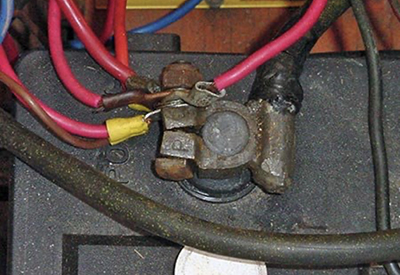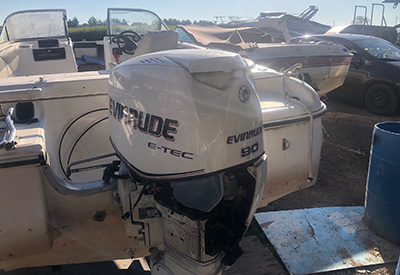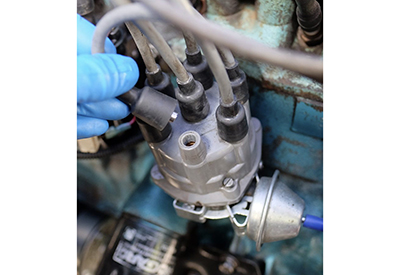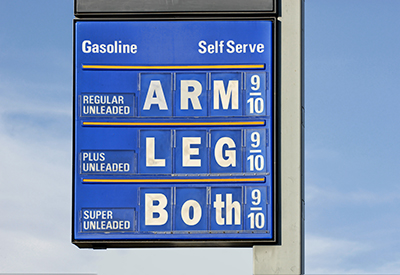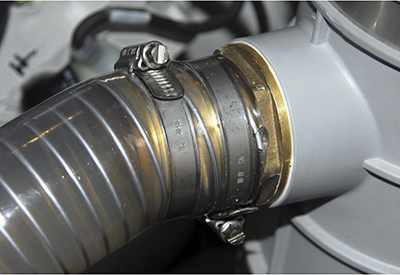Ask Andrew: What is the right battery type?

Dec 23, 2021
an example of a modern generation marine lithium battery
Most of us are familiar with the tried-and-true 12V lead-acid batteries that have been found in marine and auto applications for decades. There have been advances over time in the current output, the amp-hours and sizes available; no one can doubt that they do the job well.
So why re-invent the wheel? Why confuse a proven technology with other types of batteries?
The main answers lie in the type of applications we’re putting to use on our boats today: trolling motors, electric engines, deep cycle house batteries, networked systems and navigation instruments all require 12V power that can be delivered in better ways.
Many boaters and marine manufacturers have chosen to adopt some of the newer technologies found in AGM (absorbed glass mat) and Lithium batteries. Here’s a breakdown of the differences between them:
Cost
An AGM battery costs marginally more than a comparable Lead-acid, while a lithium battery can cost upwards of 2x as much.
That said – this is the initial cost.
Capacity
AGM batteries are sensitive to the depth of discharge – and the rule of thumb is to only discharge the battery to 50% of its total capacity. This means that a 100 amp-hour rated AGM battery really only has 50 amp-hours of usable capacity before a re-charge is necessary.
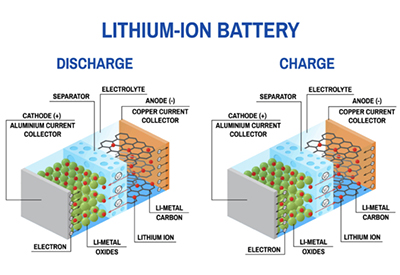 a breakdown of the internal structure of a Lithium-ion battery
a breakdown of the internal structure of a Lithium-ion battery
A lithium battery on the other hand can be discharged to 80-90% before requiring a recharge. This means that a 100 amp-hour rated Lithium has 80-90 hours of usable capacity.
In a much more practical sense – this means that a typical house-bank can be minimized. 2 AGM batteries could be replaced with a single Lithium battery with the same rating, to achieve the same capacity result.
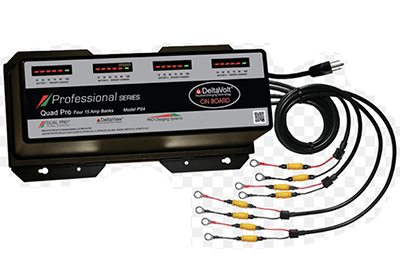
a charger that can be programmed to charge a conventional lead-acid, AGM or Lithium
Life cycle
A lead acid battery can be discharged and recharged between 400 – 1500 times in its life compared to 1500 – 2500 for an AGM battery. A lithium can be expected to have significantly more discharge and recharge cycles. Somewhere between 2000 – 4000.
Temperatures
A lead-acid battery contains a liquid electrolyte. When it’s in a fully charged state, the battery won’t freeze. If its left in a discharged state and temperatures drop, the electrolyte could freeze, causing damage.
An AGM battery doesn’t have the same electrolyte, and freezing isn’t an issue. It’s also possible to charge and use an AGM battery effectively in below-zero temperatures. This is both an advantage for storage, as well as for winter work.
Lithium batteries are temperature sensitive and require temperature regulation to function in sub-zero environments
Size/weight
Lithium batteries are significantly lighter than AGM or Lead-acid batteries
Maintenance
When AGM batteries first arrived on the scene, they were touted as ‘maintenance free’ as compared to lead-acid batteries, which required testing and topping up of electrolyte over time. Likewise, lithium batteries are sealed, and are considered maintenance-free.
Because lithium batteries are so new, the associated technology is still catching up: battery chargers and solar controllers may not be compatible with lithium batteries – so always check with the manufacturer if you’re considering an upgrade.
Application
Lead-acid and AGM batteries can be used as cranking or deep-cycle batteries, depending on their construction. Lithium batteries are only designed for deep-cycle applications. This means that they aren’t ideal for use to start a gas or diesel engine, but are ideal as for powering the house-system, or for running an electric motor.
Summing it all up:
Lead-acid
– Tried and true technology
– Can be used as a cranking or house battery
– Cost effective for initial purchase
– Shorter life-cycle
AGM
– More advanced technology and maintenance free
– Can be used as a cranking or house battery
– Can be used in a larger range of applications and environments
– Lower discharge rate
Lithium
– Advanced technology
– Maintenance free
– 15% higher charging efficiency
– Can be 50% lighter
– Higher capacity rates
– Longer life-cycle
– Cost effective over time, when factoring in all variables
– May require specific chargers or charge-controllers
 Andrew McDonald is the owner of Lakeside Marine Services – a boat repair/maintenance firm based in Toronto. Andrew has worked in the marine industry for 12 years and is a graduate of the Georgian College ‘Mechanical Techniques – Marine Engine Mechanic’ program.
Andrew McDonald is the owner of Lakeside Marine Services – a boat repair/maintenance firm based in Toronto. Andrew has worked in the marine industry for 12 years and is a graduate of the Georgian College ‘Mechanical Techniques – Marine Engine Mechanic’ program.
Questions or comments for Andrew? Email him directly via: askandrew@lakesidemarineservices.ca

